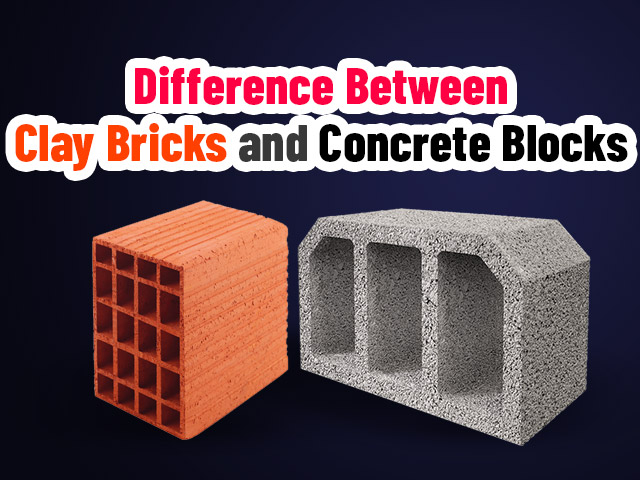
The differences between clay bricks and concrete blocks are quite large in terms of composition and usage. One of these two materials should be selected according to type of project and intended use of building to be built. If the correct variables are not taken into account when making a selection, negative results may be encountered in terms of both efficiency and cost of the structure.
In the initial phase of a project, the most important point is material selection. In this respect, the differences between clay brick and concrete block should be known and taken into account as well as their pros and cons.
What Are Differences Between Clay Bricks and Concrete Blocks?
First of all, it should be noted that clay brick and concrete block are both strong materials. They are fire resistant and can be used for a very long time. However, the fact that they are produced from different raw materials causes their structural properties to be different. Clay brick is obtained by mixing sand, lime and concrete materials. Different types and colors can be obtained by mixing clay with barium, manganese and some additives.
Concrete block, on the other hand, is produced from aggregate consisted of crushed sand or stone. A product with high strength is obtained witth no need to add different materials.
The differences between clay bricks and concrete blocks can be listed as follows:
- Compressive strength of concrete blocks is higher than clay bricks.
- Concrete blocks have much higher water resistance. They do not absorb water, thus it can be said they have a consistency close to waterproof.
- Concrete has shorter expected life than clay brick. Concrete blocks give efficient results up to 100 years. Clay bricks can reach up to 1000 years.
- Concrete blocks were not environmentally friendly products until green concrete technology has emerged. But now they can be produced from recyclable materials.
- From an architectural perspective, clay brick can have a more aesthetic appearance. But concrete blocks are always stronger and there are applications that will add a nice appearance to its exterior
- Concrete blocks can be easily painted. Clay bricks secrete metallic salts that cause paint to peel off.
Advantages of Concrete Blocks
- Purchasing and logistics can costu less.
- They can be manufactured by recycling various wastes such as fly ash.
- it is resistant to disasters such as hurricane, earthquake, flood, and fire.
- It helps to provide a high level of sound insulation.
Benefits of Clay Bricks
- The thermal mass of the bricks is high. So they absorb heat during the day and release it at night. It makes the structure cooler or warmer.
- They are made from recyclable materials.
- They are resistant to fire.
As is seen, we are talking about two products that have almost the same advantages. If you still have the question of “brick or concrete block which is better “, you can contact us and learn which product is suitable for your project from GlobMAC’s engineers and sales representatives.
